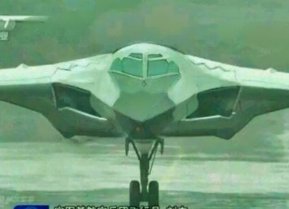China's Navy Dream: Nuclear Powered Aircraft Carriers
Rumors have emerged that China plans to construct a fourth aircraft carrier, possibly aiming for a nuclear-powered design, a move that could significantly boost the People's Liberation Army Navy's (PLAN) capabilities.
Summary: Rumors have emerged that China plans to construct a fourth aircraft carrier, possibly aiming for a nuclear-powered design, a move that could significantly boost the People's Liberation Army Navy's (PLAN) capabilities. This development follows the PLAN's recent advancements, including the commissioning of its third carrier, the Type 003 Fujian, equipped with electromagnetic catapults akin to the American EMALS system. While the United States Navy maintains dominance with 11 nuclear-powered carriers, China's potential addition signals its intention to expand its naval power. This ambition reflects China's broader goal of becoming a "blue water" navy capable of global reach, amidst increasing military spending and efforts to enhance its strategic position, particularly concerning Taiwan. This strategic move underscores the rapid evolution of the PLAN and poses a notable challenge to the U.S. and Western naval superiority.
China Eyes Nuclear Future: Plans for a Fourth Aircraft Carrier Revealed
The United States Navy operates a total of 11 nuclear-powered aircraft carriers, including 10 Nimitz-class supercarriers and one Gerald R. Ford-class super-sized flattop. Over the coming decades, the aging Nimitz-class carriers are set to be replaced on a one-for-one basis with the new Ford-class warships – ensuring that the United States remains the dominant carrier power in the world.
However, Beijing has other plans and it was just last week that rumors circulated it will build a fourth carrier. It came after Yuan Huazhi a political commissar of the People's Liberation Army Navy (PLAN) and National People's Congress (NPC) deputy, told reporters that an announcement could be expected soon on a fourth carrier.
This isn't exactly earth-shattering news, as there has been speculation that it is a matter of when and not if China would begin construction on a fourth carrier, as it is now completing its third carrier, the Type 003 Fujian.
Great Naval Leap Forward with Aircraft Carriers
The PLAN has in just the past decade greatly expanded its aircraft carrier capabilities, which began by refurbishing an unfinished late Cold War era Soviet aircraft cruiser that was purchased from Ukraine in the 1990s. It was commissioned in 2012.
Even before news broke last week of a fourth carrier, China was already on track to have the second-largest carrier force with its three flattops – but what makes the latest revelation potentially worrisome for Washington is that there is speculation that the future warship will be nuclear-powered. Currently, only the U.S. Navy's aforementioned carriers – along with the French Navy's flagship Charles de Gaulle – are nuclear-powered, which gives the vessels unlimited range and endurance.
The PLAN already achieved a significant breakthrough with its conventionally-powered Type 003 Fujian, which is equipped with electromagnetic catapults and arresting devices that allow aircraft to be launched and recovered more frequently. It began testing the system last November. The technology is similar to the American EMALS system employed on the Ford-class.
The third and newest Chinese aircraft carrier is on track to begin sea trials later this year.
More Than a Blue Water Navy for China
Though Beijing has made clear it aims to develop a modern "blue water" navy within the next decade, it still lacks the overseas military bases to support such ambitions. It continues to forge relations and could expand its global reach, but in the shorter term, military analysts that the Chinese Communist Party (CCP) may see carriers as necessary to achieve some aspirations closer to home – namely reunification with Taiwan.
As the South China Morning Post reported, aircraft carriers are believed to be crucial to operations along the Taiwan Strait, the waterway that separates the self-ruling island nation from the mainland.
Beijing's latest military budget, which was announced on Tuesday, raised funding for the Chinese armed forces by 7.2%, the same rate as last year amid aims to ramp up combat readiness as well as defense research and development.
Over the past two decades, the PLAN has rapidly expanded in both size and capability, positioning itself as a credible peer-level threat to the U.S. and other Western navies.
Author Experience and Expertise: Peter Suciu
Peter Suciu is a Michigan-based writer. He has contributed to more than four dozen magazines, newspapers, and websites with over 3,200 published pieces over a twenty-year career in journalism. He regularly writes about military hardware, firearms history, cybersecurity, politics, and international affairs. Peter is also a Contributing Writer for Forbes and Clearance Jobs. You can follow him on Twitter: @PeterSuciu. You can email the author: [email protected].


